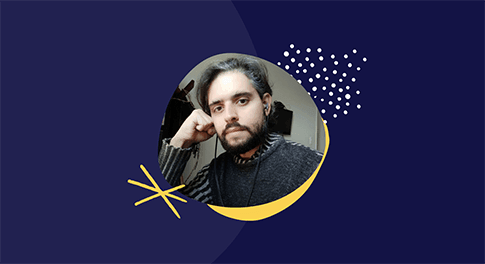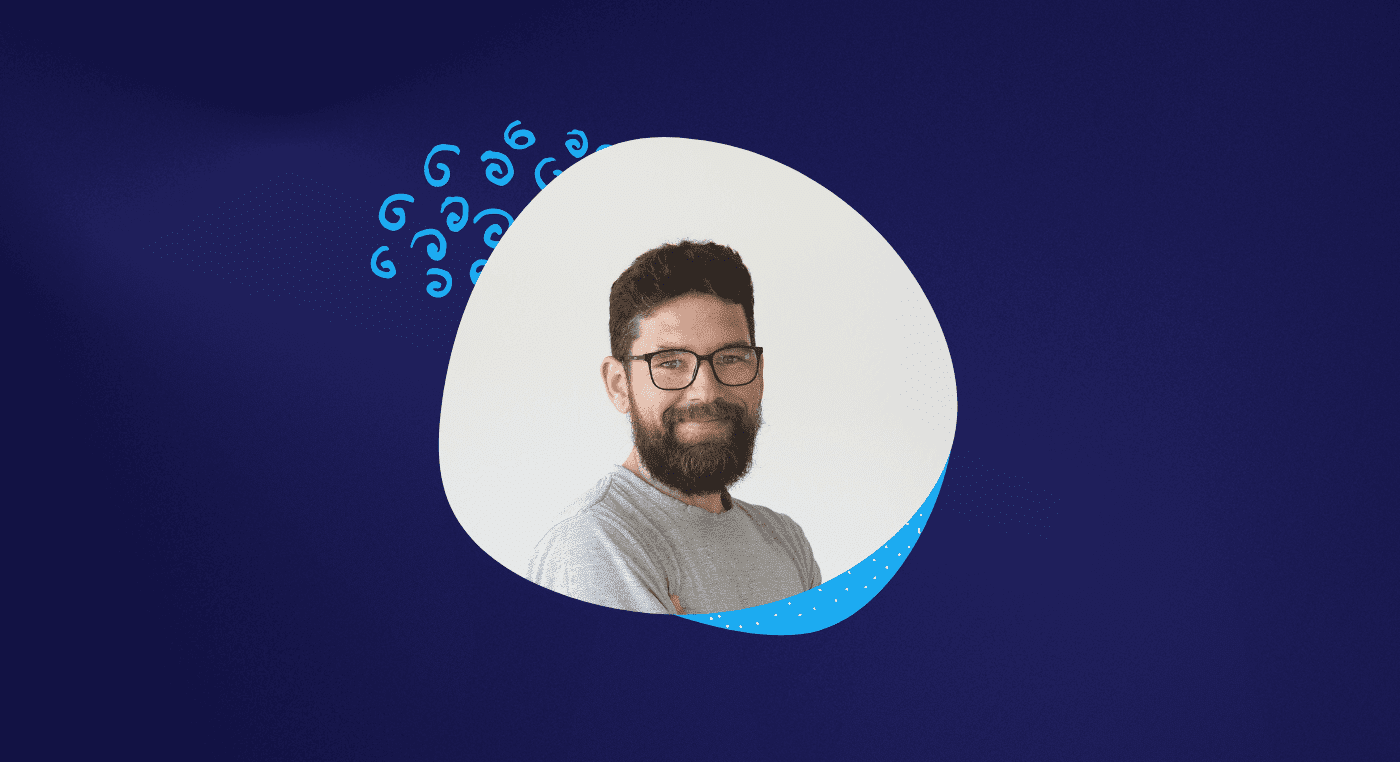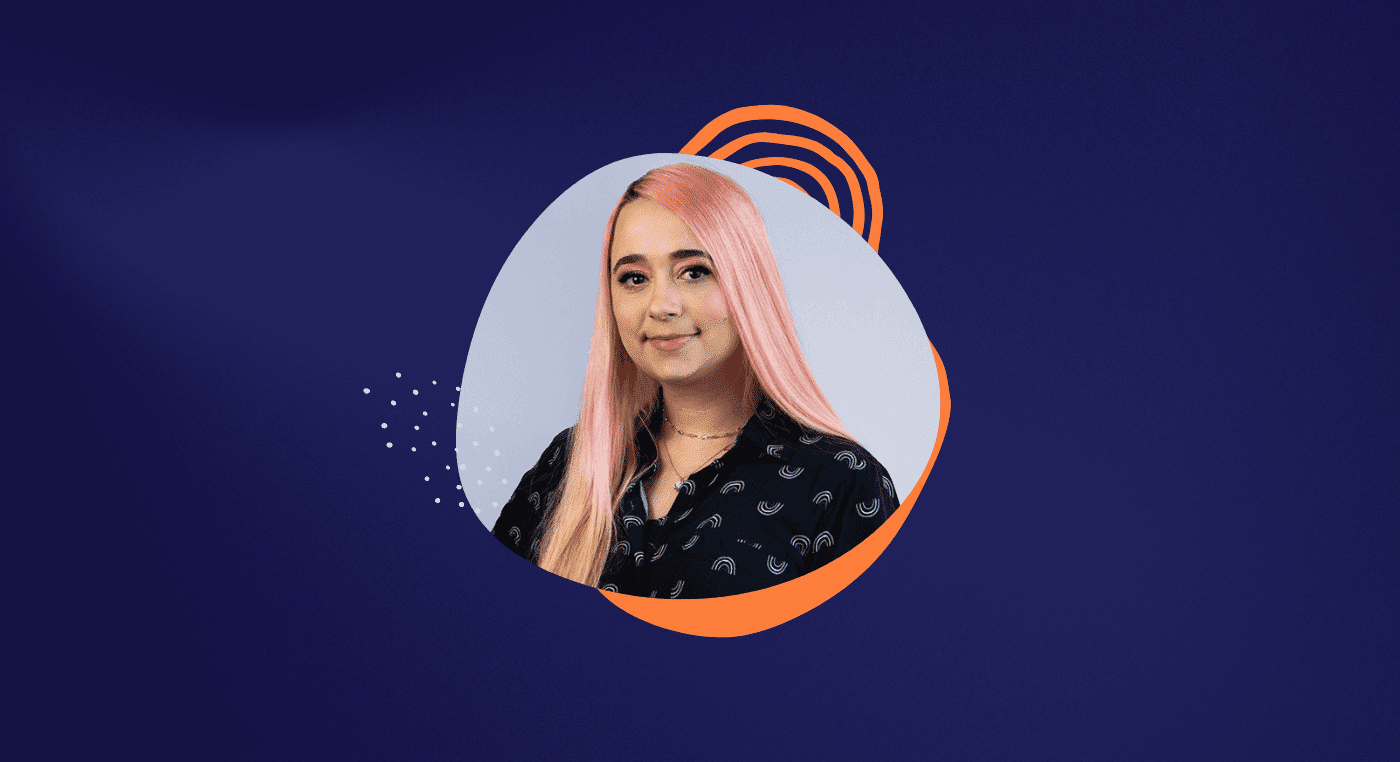Tiago Lira is a Master Interface Design student and tells us about his story of pivoting from Graphic Design to UX.
Tiago has years of experience in Graphic Design but was already feeling a little unmotivated with the area. The trigger for trying to change careers was when he left a job where he had been for nine years.
In addition, Tiago tells us how he established his study routine and what were his main difficulties in switching careers.
Check out Tiago's story and get inspired!
Tiago, thank you for your time! Tell us a bit about your background, please.
Felipe, thanks for the opportunity to be here and to try to help people who are looking for a new path.
I am a graphic designer, and I have had several experiences in this area. Graphics has become my specialty.
However, there came a time when I was a bit apathetic, looking for something new to make my career more active.
I had been working at this company for 9 years, and being let go was the stepping stone I needed to get out of that inertia.
Stability gives you a certain security, but it can hinder your decisions a bit as well.
I was already uncomfortable with my job, but this change accelerated things.
Reading Tip: UX Design: Science or Art?
Why did you decide to study UX Design?
When I was dissatisfied with my job, I started looking for other opportunities.
Because of that, I started to see these terms that I didn't know – UX, UI, Product Design. Or rather, that had a different perspective than what I had learned in college.
So I saw an opportunity; I thought it could be something important for me.
I started to study a little more about it and realized that although these terms were new to me, they were not necessarily new concepts.
At the same time that I realized this, I saw UX as a kind of natural evolution of Graphic Design.
UX advocates that we should meet a user's need and this has always been a concept that has been present in my values as a graphic designer.
I have always tried to make people's lives easier, for example, by developing well-designed signs so that a person doesn't get lost.
The difference is that today I do this for interactions, and this has been fascinating to me!
In the last months that I spent at work, I started to learn more about UX, UI, Product Design, and all these terms that, for me, were new.
The desire to get into this market came up, I felt a connection, and I understood that I could use my background in this new area.

How was your study process until you got your first position in UX?
As soon as I was laid off from the company, I was able to dedicate more time to my studies, but I started to study many subjects, not only UX.
I revisited some old concepts and techniques but always left about 3 UX topics to study during the day.
I took some smaller courses until I discovered Aela and got very interested in the Master Interface Design Bootcamp.
But before I enrolled, I looked into the course structure and one of the things that really interested me was the mentoring part.
So, I spent months of intense and dedicated study.
During this period of study, I got two freelance jobs, but still in graphic design. I accepted them because I couldn't go on without work any longer. I felt a mixture of concern and relief because I wanted to migrate.
Although I went back to the market, I continued studying. Then the pandemic hit.
The company where I worked decided to make us work from home along with the prior notice. In other words, I had to get moving to find another job. I didn't want to be unemployed again.
I was interviewed twice for Product Design, but the one that really worked out was the third one, which happened at the end of my notice period.
I attribute this achievement to my dedication and study schedule, in addition to the Master Interface Design, and having learned the ropes with you guys.
The interviewer from the company saw my portfolio and, even though there were not many UX projects there, he saw that I structured my whole idea and line of reasoning to get to the final result. And he really appreciated my work on this.
In other words, what you always say about showing the process, the reasoning, is really something that companies look for and value!
Reading Tip: What’s The Difference Between UX And UI Design? – Understanding Once And For All
How was the interview and hiring process for this position?
The job came to me through a referral; some people knew I was looking for and sent me some opportunities.
In the interview, I was very honest. I said that my specialty was graphic design, but that I was in the process of migrating to UX Design.
To my surprise, they told me that this was exactly the profile they were looking for.
What the company had in mind was to hire someone who could really help, even if they did not have years of experience in the area. But what they were looking for was someone who had life experience.
And that was something that motivated me a lot because I had a certain fear because of my age.
In other interviews, I felt that they were looking for a younger profile, with less experience and that they could pay less.
How is the experience of working remotely going?
In the beginning, it's more complicated to get used to. There are meetings where I feel the physical presence is missing.
But in the end, it's a situation you have to get used to.
I think it's very important for companies to start training their teams to adopt this work model in the future.
Mainly because there are a lot of remote positions in UX Design.
In my case, it took me a few weeks to feel comfortable with this model.
In order to help, I established some work rules here at home, like not working in pajamas and separating my office from my wife's. So, this does help.
Do you miss the physical office?
I prefer to work from home, I like this model. But mostly because I don't have to waste 1 hour and 30 minutes in traffic.
There are situations that I find easier to do in person. Sometimes we need to talk to someone and being in the office makes things easier.
But being at home has its advantages. Being able to sleep a little more, stop to make lunch.
I try to balance my routine this way.
Reading Tip: UX Design In High Demand
And how has it been working with UX Design?
In the beginning, I suffered from what they call impostor syndrome.
I was in doubt and thought: didn't I get into this area too fast? Do I have the capability? Am I not fooling myself?
But at the end of the day, changing fields was very satisfying.
And I think that this feeling – of inability – must be quite common for a lot of people and, to be quite honest, I don't know if we will ever stop feeling it.
It would be very easy for me to come here and say that I was prepared, I studied, and I made it.
But the reality is different. There is a shock!
I am saying this so that those who are watching and go through something similar will understand that this is normal. It's okay to be afraid. The point is not to let fear paralyze you.
You are probably going to get a junior position. So, look for more experienced people to help you. If you are in the Master Interface Design, look for mentors. There is always someone who can help you and reach out.
At the same time, we have to remember: you cannot know everything at once. So we need to hold our anxiety and try to relax.
As for me, I am trying to understand and learn one new thing at a time.

How did you organize your studies?
You have to create a routine, there is no way.
And each person has to create a routine that fits their profile. If you prefer to study at night, make it a more nightly routine. If you prefer the morning, create a daytime study routine.
I know it is hard because we are focused on working at least 8 hours a day, even if we work remotely.
What helped me to create a routine was to sit down, draw and write down what I had to do. Then I would open my computer and my schedule was already there in front of me; I knew what I had to do for the day and this helped me a lot.
Today my schedule is more complicated, but before I could study for about 3 hours a day. Nowadays I manage about 1.5 hour a day, roughly.
To give you some advice, I believe that if you put your routine on a spreadsheet and open this file every day, it will set a trigger and it will do you good. It is a matter of discipline, just like taking care of your health.
I know that many times there are obstacles. You might not live in a big city, your internet might be bad, or you might have kids; all these things really interfere and there is no magic formula.
What I can say is that everyone can find their own way of doing things. And especially in this situation of migrating from one area to another, you have to organize yourself and make some small sacrifices.
What has been the biggest challenge in your work as a product designer?
I'm not sure if I'm delivering the activities with the speed I had before migrating to UX.
The company I am in is very organized, we use many tools that help us on a daily basis.
So far I haven't received any negative feedback in this sense, but I keep wondering if I'm not taking too long to come up with the solutions.
I think this is very much related to impostor syndrome.
I have to control myself not to get carried away by this kind of thought because it can affect my productivity and my growth.
Reading Tip: The Dunning-Kruger Effect And Its Impact On Your Career
What would you say to Tiago from the past? When he was unsure about migrating to UX
I have thought about this and I would tell Tiago from the past to start this move sooner. Even if it was 6 months or 1 year earlier.
That is the advice I would give.
But at the end of the day, I got into UX, and I don't want to leave this area. So I need to keep studying and improving myself.
At the same time, you have to be careful because we live in an age of hyper-information. If I study everything there is to study, I will get discouraged.
What I do is subscribe to some newsletters, watch the Master Interface Design students' community slack, attend classes, etc.
I know there are people who don't even have access to the Internet, and it is really hard to give advice that includes everyone.
When we talk about migrating to UX, we should not think only about the person who comes from psychology, design, or the industry. We also need to consider class, gender, and race conditions, because this is also important.
I follow a profile called @uxparaminaspretas that provides several career tips and discusses these social challenges.
If you identify with any of these difficulties, this collective is worth checking out.

Tiago, do you want to leave a final message for our audience?
Follow Aela's and Master Interface Design steps and focus on the step-by-step.
Show your process and line of reasoning in the interviews; that makes all the difference.







